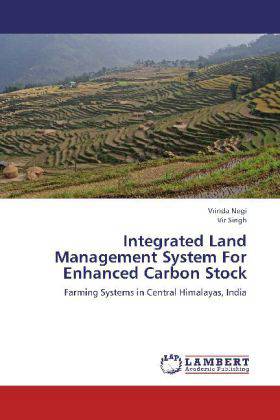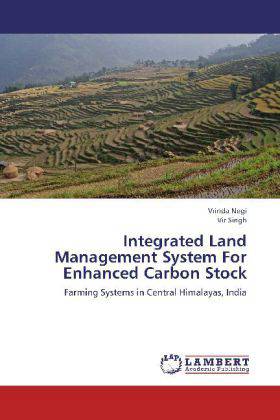
- Afhalen na 1 uur in een winkel met voorraad
- Gratis thuislevering in België vanaf € 30
- Ruim aanbod met 7 miljoen producten
- Afhalen na 1 uur in een winkel met voorraad
- Gratis thuislevering in België vanaf € 30
- Ruim aanbod met 7 miljoen producten
Zoeken
Integrated Land Management System For Enhanced Carbon Stock
Farming Systems in Central Himalayas, India
Vrinda Negi, Vir Singh
Paperback | Engels
€ 74,45
+ 148 punten
Omschrijving
Himalayan mountains face several environmental problems. Erroneous development activities add fuel to fire. Himalayas environmental crises are bound to have serious implications for vast plain areas. Agriculture leading to alteration in land use is one of the development activities having negative and triggering impact on delicate mountain ecosystems. This book attempts to focus on an alternative land use management system which could be instrumental in the development of sustainable agricultural systems in the Himalayas. Based on intensive studies in part of the Indian Central Himalayas, the book presents a comprehensive picture of the agricultural systems based on integrated management systems (ILMS). The ILMS calls for appropriate land management system which is ecologically sound and economically vibrant. Forests, rangelands/ grasslands, agro-forestry systems, wastelands, marginal lands, etc. are several types of the lands in the Himalayas. ILMS involving these lands would lead to enhanced carbon stock. The book presents lot of valuable information generated during the study which might be of vital use for mountain scholars, agriculturists and policy makers.
Specificaties
Betrokkenen
- Auteur(s):
- Uitgeverij:
Inhoud
- Aantal bladzijden:
- 148
- Taal:
- Engels
Eigenschappen
- Productcode (EAN):
- 9783659288609
- Verschijningsdatum:
- 10/11/2012
- Uitvoering:
- Paperback
- Afmetingen:
- 151 mm x 222 mm
- Gewicht:
- 213 g

Alleen bij Standaard Boekhandel
+ 148 punten op je klantenkaart van Standaard Boekhandel
Beoordelingen
We publiceren alleen reviews die voldoen aan de voorwaarden voor reviews. Bekijk onze voorwaarden voor reviews.








